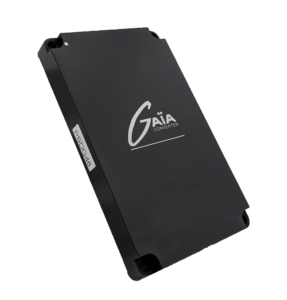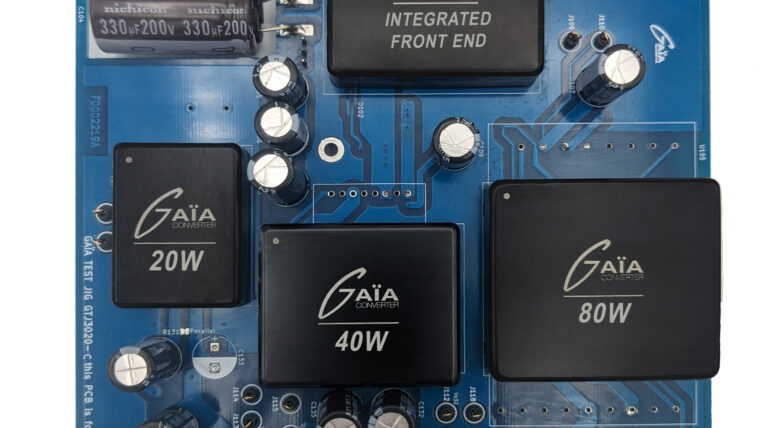Press Articles
Simplifying your future
Modular power brings resilience features to defence and aerospace
Author : Christian Jonglas, Technical support manager

Designers working in defence and aerospace are seeing increasing pressure to work on faster design cycles and build greater flexibility into the end products. They are not alone. Engineers operating in other markets have experienced the same demands. To satisfy them, many teams have chosen to use modular design techniques. These architectures allow components and subsystems to be swapped out and modified easily throughout the lifecycle. They also allow easy customisation for individual projects. But the stringent requirements of the defence and aerospace environments call for special attention to how modularity is achieved.
Modular power-supply design offers many advantages over traditional monolithic architectures. The advances made in switched-mode design have removed the notional space and energy efficiency of highly customised monolithic architectures. One of the most important trends lay in the evolution of the “brick” architecture. The development of power modules that employ standard form factors and pinouts let designers mix and match different output rail configurations with a common front-end converter.
Power-engineering specialists on a project could accommodate changes to output-rail specifications, perhaps demanded by a specification change to a key component, by simply swapping out one brick for another in the same range. The common pinout and size of bricks for the relevant power range allows this change with no modifications to the PCB in most cases. The brick architecture has also allowed for easier system maintenance and upgrades in the field. When systems need repairing, technicians can swap out individual modules and replace them with new and possibly improved units as needed. As technology improves over time, it can also become feasible to take out an older quarter-brick module, for example, and replace it with a higher-power element.
Military requirements
Defence applications lend themselves to a modular approach, in principle. The use of standard input buses, such as 24V DC and 28V DC, in both ground-based and airborne applications helps promote a move towards modular power architectures. However, defence and aerospace applications introduce complications that need to be addressed. Teams need to be careful to select suppliers that can address these requirements.
There are many constraints that need to be satisfied by a modular architecture, even where a standard input bus is part of the design. Among them is the need to satisfy stringent military-grade standards. The overall supply design needs to deliver protection against voltage spikes and short-term power outages. Those requirements call for input filters and hold-up management.

There are many constraints that need to be satisfied by a modular architecture, even where a standard input bus is part of the design. Among them is the need to satisfy stringent military-grade standards. The overall supply design needs to deliver protection against voltage spikes and short-term power outages. Those requirements call for input filters and hold-up management.
The DO160 and MIL-Std 704 requirements, for example, demand the ability for a power supply to maintain power to the output for as long as 1 second in the event of a power interruption. Hold-up circuitry can provide this, using suitably large capacitors. But the current from such devices needs to be managed carefully to avoid problems with inrush currents as the power input returns to normal. Size is another key issue, especially in highly space-constrained avionics systems.
By using high-voltage circuitry in a hold-up module, it is possible to reduce the size of the tank capacitor. This is because the use of a higher voltage than that required by the output rail increases the stored energy for a given capacitance value. Active inrush current monitoring integrated into the circuit alongside other protection mechanisms ensures correct operation for the hold-up function.
Filters provide further protection against input spikes and surges. The specific nature of spike protection depends on the target system. Some will need lighting protection, which is often achieved using transient voltage-suppression circuitry. Another filtering requirement comes from the need to protect against electromagnetic interference that could otherwise disrupt system operation. Several military standards call for protection against both conducted and radiation emissions and susceptibility. Again, the specific requirements of the system will guide decisions on the type and level of protection needed in the power supply subsystem.
Migrate away from custom design
Though one way to achieve the additional protection that defence and aerospace power supplies need is to use custom circuit designs, this will take time to achieve. And it will counteract the time savings achieved by selecting standard bricks for the bus and output converters. However, a modular approach to both power conversion and protection is possible. GAIA Converter has taken this approach to create standard protection and utility modules that can be used in series with the power converters. This architecture allows different protection capabilities to be swapped in and out of the design as needed.
With the correct module design, it is possible to use a consistent PCB routing and achieve close module spacing to reduce overall power-supply size. This approach to design should ease the path to creating more flexible evaluation boards that design teams can use to assess the performance of different combinations of modules. GAIA is working on building evaluation boards that will provide designers with practical examples and guidelines for integrating modules into their systems.
With modules designed to work in compliance with standards such as MIL-Std-1275 and DO-160, it is a straightforward process to specify and integrate a fully protected power supply using readymade modules for ground vehicles and avionics systems, respectively.
Higher density is achievable using tuneable modules that integrate the required components for a military-grade power supply into a single unit. An example is GAIA’s PSDG48. This is a single 48W power-supply module that can support up to three different outputs. The module integrates all necessary functions, including hold-up and EMC filtering into the same compact unit.

Power beyond defence applications
As the scope and range of highly reliable modular supplies able to handle stringent operational requirements expand, it is possible to see these products move into adjacent markets. Sectors such as industrial automation and renewable energy call for high power densities, resilience and compact size. They can also benefit from the flexibility of modular architectures to allow customisation of systems to specific use-cases. Modular power supplies known to satisfy the stringent needs of the military environment provide clear advantages in terms of reliability and safety in applications that need similar protection against spikes, surges and interruptions.
In summary, the modular design of power supplies has demonstrated clear benefits to users. Modularity enables cost-effective designs that can adapt to needs that change rapidly. Thanks to advanced switched-mode conversion techniques, such power supplies offer high efficiency and, because the supplies can reuse proven modules, guarantees of high reliability.
By designing modular power supplies to accommodate the needs of the defence and aerospace communities, suppliers such as GAIA can deliver modularity not just for output-rail specifications but for features that improve overall resilience, such as filtering and hold-up power. Because they are part of the modular structure, capabilities can be updated and upgraded easily as specifications change. This applies to systems in the field as well as those on the production line. The result is a power architecture that moves with the times and also guarantees the highest operational standards.
Modularity has become a key element of electronics designs in many markets. Defence and aerospace have more specialised needs but as work by GAIA has shown, it is possible to develop modular power architectures that benefit these markets, as well as market sectors that need similar levels of resilience and reliability from their energy-management subsystems.



